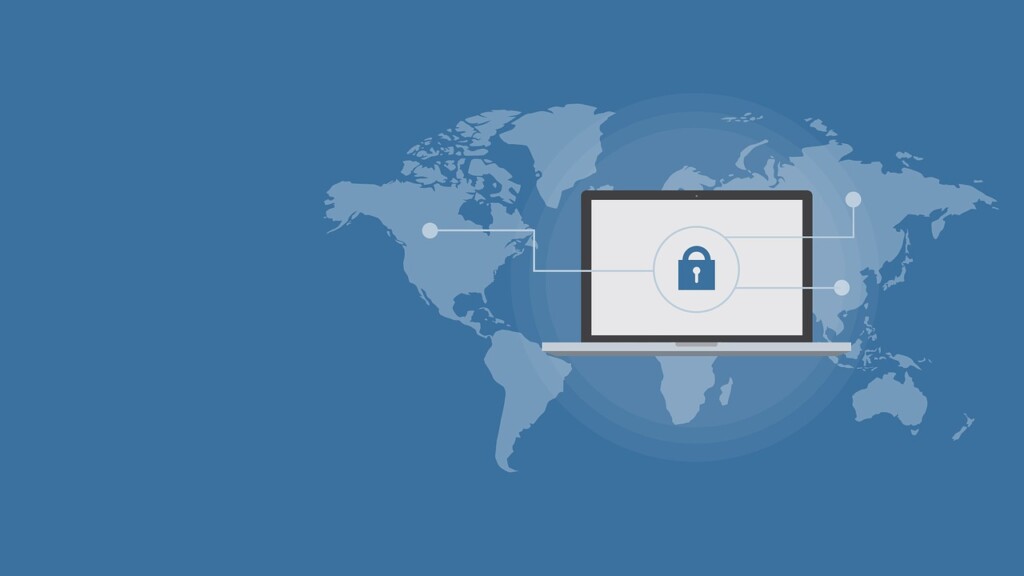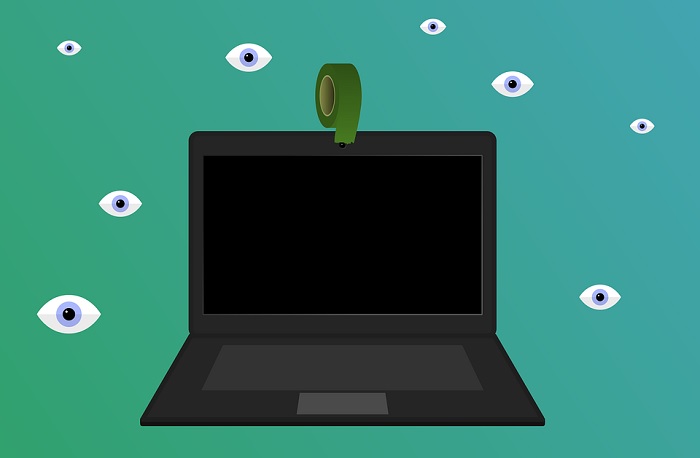
You Should Be Worried About Cyberstalking
In the real world, one of the scariest experiences is to be stalked by someone. This is when a person is constantly followed and spied on.
There are many varieties of stalking. In some cases, stalking is a prelude to being physically attacked. A serial killer might stalk a potential victim. Watching what they do, learning their routine.
In most cases, it's a way to get personal information about that person which would otherwise remain private. A private detective might do this in order to get information for a client.
In both of these cases, the stalkers don't want the target to know about the stalking while it's in progress. They'll use the information against the target at another time. However, the most well-known variant of stalking is different.
This is where the stalker makes sure that the target knows they are being followed. This type of stalking is also a form of harassment and intimidation. The stalker will repeatedly phone the victim or otherwise make it clear that they are being watched.
Regardless of the form, it comes in, being stalked is a terrible experience and quite dangerous to the victim in various ways. When you add the internet to the equation you get something that's even more frightening. This is what we call cyberstalking and it's a serious privacy and security issue for anyone who uses the internet.
Defining Cyberstalking
Cyberstalking may immediately make you think of the related term cyberbullying. While cyberstalking is usually also a form of bullying, it has distinct features other forms of bullying don't.
Specifically, a cyberstalker may follow a target across different platforms and locations. Even if they only use one platform (such as Facebook), the level of scrutiny is intense. Messaging, groups, pages. Wherever you go, they are there to make your life a living hell.
Cyberstalking is almost always not just an act of pure surveillance. It involves attacks on your character, lies about you, threats and any other interaction that damages you psychologically.
It's important to understand that people simply following you as intended using social media is not stalking. It crosses into the stalking area when someone jumps on your activity and immediately begins harassing you. Cyberstalking is a pattern of behavior and normal social media follows are not enough to qualify.
What Causes Cyberstalking?
A fair question to ask is what causes cyberstalking in the first place? The truth is that no one can say with 100% certainty, but there are some things that psychologists know about cyberstalking behavior.
Cyberstalkers have a lot in common with cyberbullies in general. Although they tend to be much more extreme. Cyberstalkers want to hurt their targets in any way they can. They want to scare them, humiliate them, control them and worse.
Cyberstalkers usually feel wronged by their targets. You may have won an argument against them, rejected their flirting or embarrassed them somehow. In some cases, it's a real type of hurt, but most people would just brush it off in no time. At other times there was no genuine injury, but the cyberstalker is so oversensitive that they see even the mildest cold treatment as a personal insult.
The type of person who does this sort of things often has a mental disturbance that distorts their views or influences their personalities. Compulsion, obsession, instability and high sensitivity to rejection are some common traits.
Finally, a portion of cyberstalkers might be people who are known to the victim in real life. An ex-partner or spouse, a work colleague or anyone else you may have interacted with.
The Forms Cyberstalking Takes
Cyberstalking actually describes a large number of different behaviors. Not all of them are visible to the victim, but you should still be aware of them as a preventative measure. With every new online technology that emerges, there may be more ways for cyberstalkers to ply their trade. Most cyberstalkers are not elite hacker geniuses. Instead, they get their tactics from more or less the same playbook. They'll learn from other stalkers or even articles like these. Still, it's better for the information on how stalking happens to be in the public domain. Otherwise, it would be impossible to protect yourself. Let's have a good look at some of the most common tactics.
Account Hacking
Through phishing and other dubious means such as information brokers, cyberstalkers may try to hack your various accounts in order to get personal information about you. If you use two-factor authentication and strong passwords you should be pretty safe against this sort of intrusion, but cyberstalkers may go to extreme lengths to target your accounts.
Location Monitoring
Plenty of social media platforms allow you to "check in" to show people where you are. Personally, I'm a little confused about why people want to do this in general. Perhaps as proof that they visited a specific place.
Regardless, if you have a cyberstalker following your check-ins it could spell big trouble. This tells them exactly where you are and can turn an online stalker into a real-life stalker.
So you really should refrain from checking in on social media. At the same time, try not to post about where you are while you're there. Wait until you are back home or another location, so that your posts can't be used by a cyberstalker to achieve the same goal of location tracking.
IP Address Logging
Every device connected to the internet has a public IP address. This is how the internet manages the billions of devices sending information across its vastness. The IP address of your internet router is visible to the sites that you visit, which is how they know where in the world you are. In some cases having an IP address can lead to a specific physical address or neighborhood.
A cyberstalker can trick a target into clicking a link which will log their IP address. This can be used to then physically find the victim or to expose their real name, a type of harassment known as doxxing.
An effective defense against this is using a VPN, which masks your IP address and only shows the address of the VPN service itself. There's no way a cyberstalker can attack you in this way if you have a VPN.
With Location Metadata
Many people have no idea that their document, photos and other media they create and share contains invisible information known as metadata. When it comes to cyberstalking the most worrying form of metadata is EXIF data embedded in photos.
When extracted this can tell someone who took the photo, where it was taken, what camera took it and so on. You can remove metadata and you can also change your camera (or camera app) settings so that it doesn't store this information. GPS geotagging is something you should turn off as a general rule on your cameras.
Luckily most social media services now strip EXIF data from uploaded images automatically, but for the few that don't, you should implement this precaution anyway.
Webcam Hacking
You might have seen articles about big tech names (such as Mark Zuckerberg) talking about their habit of taping up webcams. This is more than some weird paranoia. Webcam and IP camera hacking is a real problem. The computer or IoT device is hacked and sends the video feed to the criminal in question.
There is usually no sign that the camera is filming and sending out footage. Cyberstalkers may use this method to get secrets or embarrassing footage of you. It's one of the nastiest things a cyberstalker can do to you. Luckily we have a whole article on how to prevent webcam hacking for you to look at.
Malware and Viruses
A technologically sophisticated cyberstalker is likely to have access to common cybercrime tools. Viruses and spying malware are exactly the sorts of thing they might use to get at you.
The same rules apply as with any other viruses. Don't download email attachments you don't know are trusted. Don't follow links in emails either.
The main threat, in this case, is that the cyberstalker might already know quite a bit about you. The email could be tailored specifically to you, with the aim of duping you into installing the malware.
Once the software is installed it can take screenshots, log your keystrokes and much more. This information is then sent back to the cyberstalker.
Catfishing
Catfishing is not exactly a traditional form of stalking, but it includes elements of stalking and so deserves to be included here.
It happens when someone pretends to be a made-up person who tries to trick the victim into starting an online relationship. When they have the person properly hooked they can get any information from them. Which can then be used to victimize them further.
Often the catfishing itself is the primary harassment. After building a relationship with the victim that feels real to them, the catfisher reveals the ruse and let's as many people know about it in order to embarrass the victim. It's one of the cruelest forms of stalking out there.
What to Do About a Cyberstalker
The first thing you should realize is that cyberstalking is a very serious matter. A significant number of cyberstalkers end up putting their victims in physical danger or do serious damage to their lives in other ways.
Never engage a cyberstalker. Do not get angry at them, threaten them or otherwise acknowledge their existence. The only thing you should do is collect evidence in the form of chat logs, screenshots and so on.
The law in most countries recognizes that cyberstalking is no joke. Which is why it's usually a criminal offense. The first thing you should do is familiarize yourself with the cyberstalking laws of your country. Know what protections are available to you and if any organizations exist to assist you.
Don't hesitate to report the stalking to authorities. Police often have access to resources that can help them find the real identity of a stalker pretty quickly. They could also provide protection.
You should also let a trusted friend or family member know about the cyberstalker so that if anything happens to you, they can report it.
Try some of these additional tips to prevent stalking:
- Delete all public calendars or records of your planned movements.
- Make sure your computer is physically secure against tampering.
- Strip as much personal info from social media as possible.
- Consider dropping social media completely.
- Don't be afraid to use the block function on online platforms.
- Install anti-spyware software.
These tips, combined with the general advice in the rest of the article should be enough to minimize the chances you'll run into a cyberstalker or become a victim if you do.
Conclusion
Cyberstalking is scary, dangerous and certainly not discussed enough. Many victims are embarrassed or afraid to seek help or let someone close to them know about the problem.
Clearly this is a good think for cyberstalkers, but things have to change. Remember that being a victim of cyberstalking is not your fault. The law is on your side, so make use of the protective powers you have and stop cyberstalkers in their tracks!
Have you ever been Cyberstalked? Let us know in the comments below. Also, don’t forget to follow us on Facebook and Twitter. Thanks!














